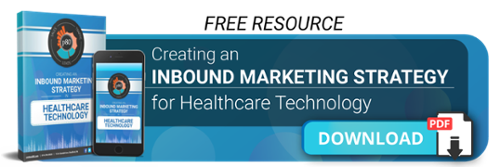Inbound Marketing Blog
for Manufacturers and Healthcare Companies
SaaS Marketing: How It’s a World Away From Traditional Marketing

SaaS marketing can be challenging because what you are selling is intangible. It can be harder to convince customers to purchase your product when they cannot physically see the item -- at least not until they test it out first.
SaaS marketing agencies have a challenging buyer process to work around. They need specific SaaS marketing strategies to combat these challenges and progress buyers through the buyer journey. These four key differences between traditional and SaaS marketing will provide clarity on what will work and not work for your company.
4 Ways SaaS Marketing is Different from Traditional Marketing
Understanding the differences between SaaS marketing and traditional marketing can be overwhelming.
Here are 4 takeaways to focus on first
- Software is always changing and updating.
- Software is intangible.
- The SaaS sales cycle can be extremely quick … or slow.
- Customer retention is crucial.
1. Software is always changing and updating.
SaaS products are ever-changing and constantly evolving. Periodic updates will change the way the products perform, which will create customer satisfaction and dissatisfaction.
This can be a hard concept for customers to come to terms with and may cause confusion for users. The SaaS marketer must be ready to prove its product updates seamlessly and easily integrates with the customer’s other data systems.
2. Software is intangible.
Unlike a car or refrigerator, software is intangible. Potential customers may have a difficult time deciding whether to purchase a SaaS product when they’re unable to see the product first-hand prior to purchasing.
Additionally, some softwares requires monthly payments, rather than a lump sum payment. Customers may be apprehensive of purchasing a software with a contract of monthly payments or a large lump sum without being able to use the software first.
With more teams working remotely since COVID-19 struck, SaaS marketers must be more agile than ever in how they achieve buy-in. Vendors that have built brand recognition (see: content marketing) will have an easier time. Those that prioritize demos over trials -- or maybe even a combo of the two -- may have an easier time.
3. The SaaS sales cycle can be extremely quick … or slow.
Some SaaS marketers enjoy an extremely quick sales cycle. This is a result of the accessibility of SaaS software online with the combination of a streamlined sign-up/download process. Today’s buyers have access to more information online, are able to more easily evaluate different options -- including (gasp) pricing.
Not all SaaS products are met with a quick sales process -- just ask B2B SaaS marketers. It’s harder to market to a fellow business because often they’re not in need of an immediate solution. On the contrary, B2C SaaS sales cycles are usually quick because customers are at home looking for an immediate solution.
Additionally, B2B usually involves more than one person making the decision -- maybe even an entire C-suite of executives! B2C typically involves one to two people making the decision.
4. Customer retention is crucial.
Due to the nature of SaaS marketing, customer retention is one of the most important aspects of the industry.
Often, SaaS products are accompanied by a monthly or yearly subscription/payment. Ensuring that customers continue with their subscriptions/pay their monthly or yearly costs, is what leads to the success of SaaS products. How do you take this extra step that many B2Cers get to skip? Keeping products up-to-date and running properly will lead to customer satisfaction and retention. If customer service doesn’t see enough attention and resources committed to it, the SaaS product won’t succeed.
Inbound Marketing for SaaS Products
The differences between SaaS marketing and traditional marketing are substantial, however there are also many similarities. Either way, your tactics should include inbound/content marketing if you wish to increase your customer count online.
To learn more about SaaS inbound marketing -- and specific strategies for generating leads and demos online -- download our free e-book below:
Our Blogs, Direct to Your Inbox!
How to Audit your Online Marketing
If you are executing digital marketing, congratulations! You are most likely already one step ahead of your competition, and making strides to meaningfully connect with prospects online. But, how do you know if you’re seeing continual success year over year, and improving your metrics?
Without the tools in place to analyze and benchmark your efforts, it is impossible to scale your online marketing and ensure continuous success.


